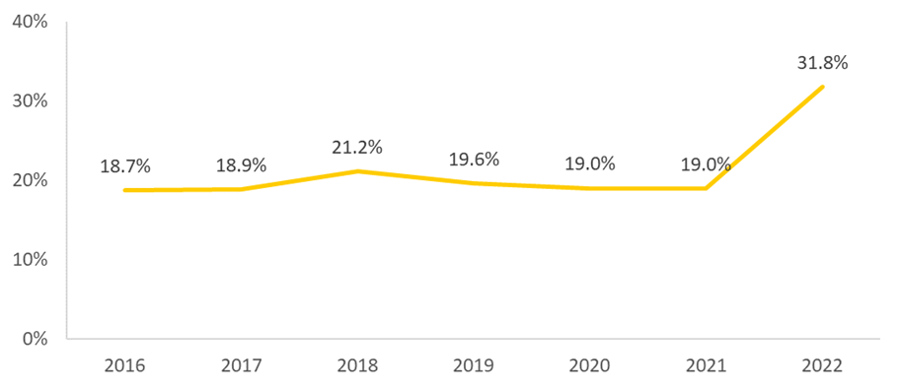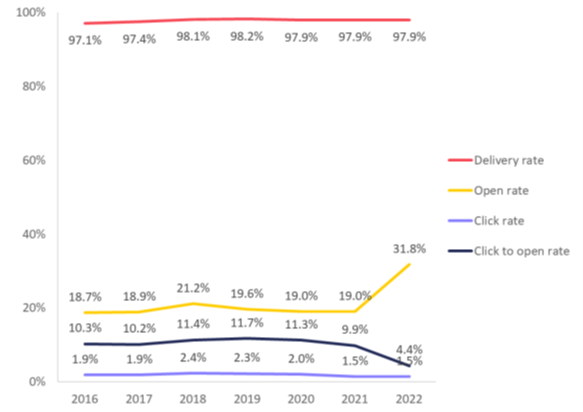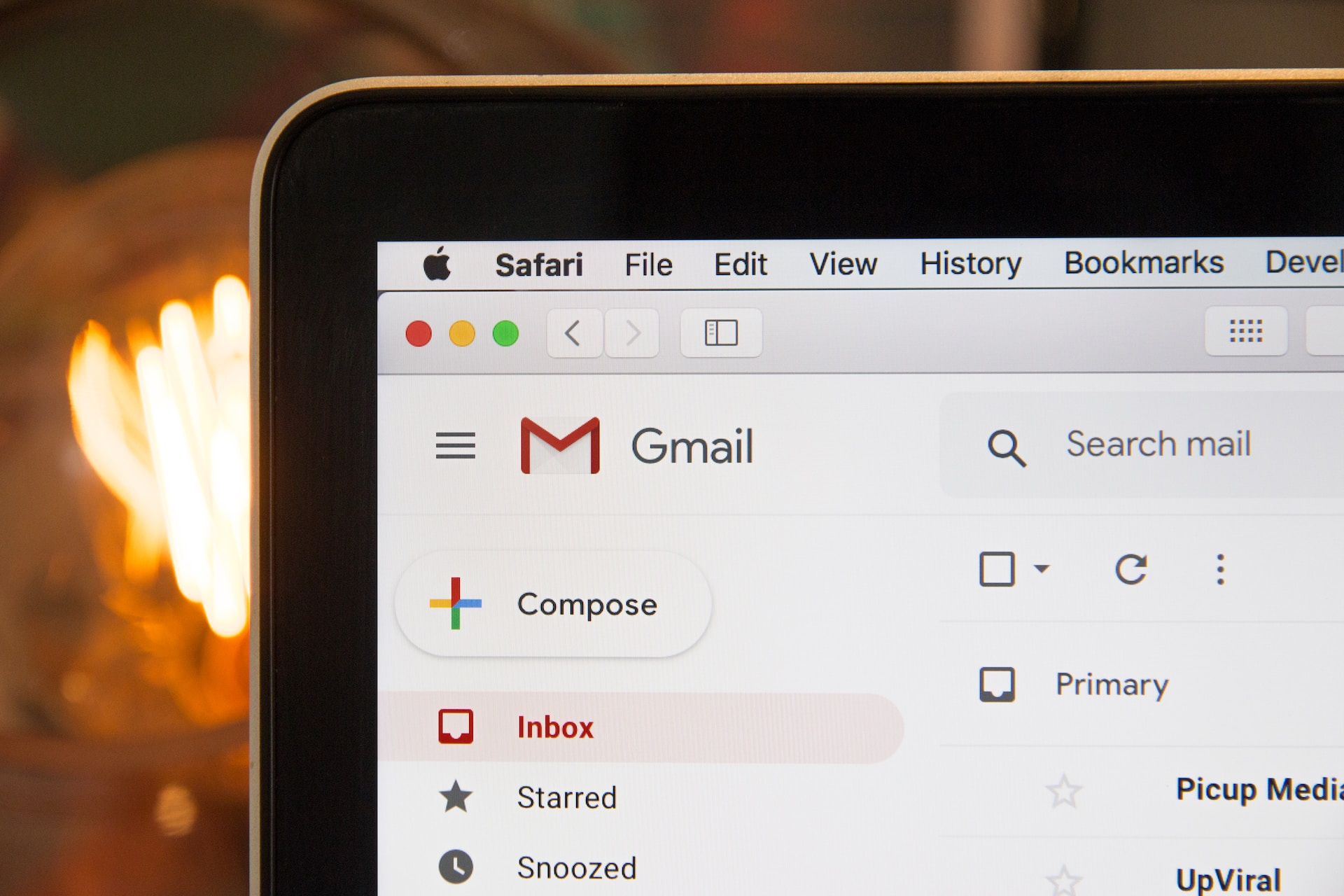How Has Email Marketing Measurement Changed in 2023?

The Data & Marketing Association’s (DMA UK) Director of Insight, Ian Gibbs, discusses the key factors impacting email measurability this year
Email marketing remains one of the most popular communication channels among both consumers and marketers. Many customers rate email as the most engaging channel because of relevance and trust, while marketers love its measurability and revenue effectiveness.
Data-driven measurement has become even more important with the cost-of-living crisis limiting consumer spending power, making it harder for marketers to drive a direct response.
However, email measurability has been severely affected this year, which could impact how it is interpreted by marketers in the future.
INFLATED OPEN RATES
This year’s Email Benchmarking Report 2023, created by the Data & Marketing Association’s Email Council (DMA UK) and Deployteq, arrives against the backdrop of email marketers having to contend with the profound impact on open-rate tracking triggered by the changes to Apple’s Mail Privacy Protection (MPP) policy.
These changes mean that pixel fires are not generated if emails are delivered to spam, or if devices are not connected to Wi-Fi or a power source. Because of these factors, it is estimated that automated fires now happen in around 85% of all instances, boosting open rate metrics accordingly.
This has led to email open rates nearly doubling year-on-year, with a 13% jump in open rates, reaching a high of 31.8%, inflated by bot accounts taking advantage of a change in Apple’s Mail Privacy Protection (MPP) policy, marking emails as ‘open’ as soon as they are delivered to the recipient’s inbox.
However, the inflated open rate due to the MPP has raised questions over the accuracy of open rate as a true measurement of campaign effectiveness.
Additionally, with the upcoming Apple Link policy, it is vital for marketing departments to explore other measurement metrics that capture the influence of their campaigns.

Open Rate Average, 2015-2022
STRONG CLICK PERFORMANCE
While click-through-rates have remained stable year-on-year (at 1.5%) and are down versus two years ago (at 2%), this performance is relatively strong against the overall back drop of performance marketing effectiveness at the moment.
However, it should be remembered that email volumes have also increased by 20% year-on-year. This means the total volume of website traffic generated by click-through traffic has still risen by at least one fifth.
This volume increase also adds weight to the argument that consumers are becoming choosier about which messages they click on – or perhaps, they simply don’t have time to carefully consider every email.
In the face of declining consumer demand during the cost-of-living crisis, performance marketers are finding that response is harder and harder to come by as reported in the DMA's CMO Measurement Toolkit earlier this year. A stable performance from email against this backdrop should give marketers confidence that the channel can help them drive results in tough times.
THE FUTURE OF DELIVERABILITY
At the beginning of the email journey, deliverability rates were stable at 97.9% in 2022. While B2B campaigns performed below this average, B2C performance held up well, suggesting many email marketers are taking the right steps to manage B2C campaign management challenges posed by Apple MPP, such as broadening engagement metrics and excluding auto-generated opens.
Nearly all sectors observed a year-on-year increase in delivery rates. Retail reached new highs of 98.9% respectively in 2022, and the Finance sector, after years of low deliverability, experienced a positive increase to 98.8%.
Open rates no longer provide a reliable measure of subscriber engagement due to Apple MPP, but many senders are still using these data points to support recency management. There is a very real risk of programmes sending to audiences they believe to be substantially more engaged than is the case. This results in declining deliverability, because they are not achieving the best practice that mailbox providers like Microsoft and Gmail expect of them as responsible senders.

Email Benchmark Averages, 2015-2022
MARKETERS MUST ADAPT
The current landscape of email marketing presents an intriguing mix of successes and challenges.
Marketers must now recognise the limitations of open rate as a sole metric – we must analyse a selected range of the metrics that matter to help develop fresh strategies to drive meaningful engagement.
For the reasons mentioned above, it makes year-on-year comparisons for open rates and click-to-open rates very difficult. To all intents and purposes, we are at year zero for tracking these metrics, as a hard trend-break comes in to play.
It is essential to remember that email isn’t just about driving sales, it is about providing value to customers and delivering brand awareness, so marketers must find an accurate way to measure the success of their outreach, ensuring consumers are catered to during the uncertain economic situation.


